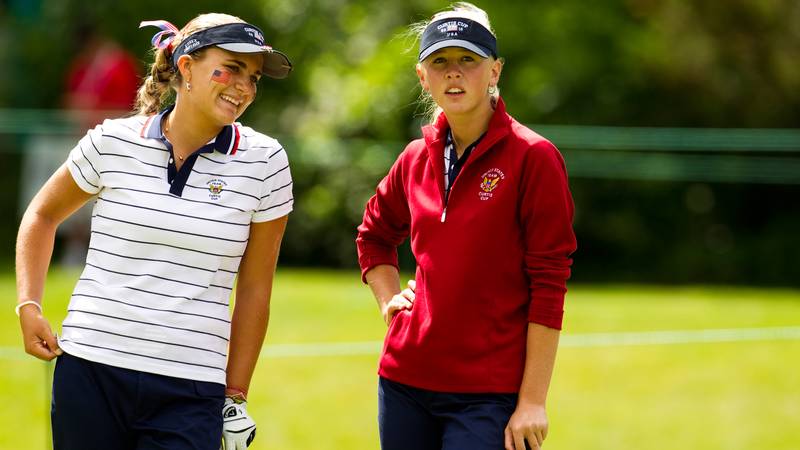Tips and Suggestions for Improving Pace of Play

Playing at a better pace is not about hurrying up or rushing around the course. It is simply about being more efficient with your valuable time, as well as everyone else’s. Adopting this mindset – and not being afraid to share it with your fellow players – will ultimately add enjoyment to your golf experience. Here are some recognized tips for improving pace of play:
Start smart
Confirm your tee time in advance and make it a point to arrive at the tee early with your golf equipment in order, ready to play. Remember essentials like extra balls, tees, gloves and appropriate clothing for the day’s weather conditions.
“Tee It Forward” unless you are consistently able to reach greens in regulation from the back tees.
In other words, play from a set of tees that is comfortable for you – one where you are more likely to hit lofted irons into greens instead of hybrids or fairway woods. It is acceptable for players in the same group to play from different tees. (The USGA Handicap System provides a formula for adjusting handicaps from different tees.)
Try alternate forms of play to speed up your round
Match play, Stableford, best-ball and other formats are easy and fun alternatives to individual stroke play because not every player has to hole out on every hole. There are multiple resources online and in print to learn about the many different golf formats. Try one out.
Minimize your time on the tee
On the tee it is usually acceptable for players to “hit when ready.” You can also save time by playing a provisional ball (Rule 27-2) if you think your original ball might be lost or out of bounds.
Plan your shot before you get to your ball
Once you are off the tee, think ahead. Determine your yardage and make your club selection before it is your turn to play. Very often, you can do this while others are playing, without disruption. If you take your glove off between shots, have it back on before it is your turn to play. Even a small step like this saves time.
Keep your pre-shot routine short
Pick your line of play once and trust yourself. Try to take no more than one practice swing, then set up to the ball and play your shot. Most importantly, be ready to hit when it is your turn. Be efficient after your shot too. Start moving toward your next shot promptly.
Aim to play in 20 seconds
From club selection to pre-shot routine to execution, strive to hit your shot in 20 seconds when it is your turn to play. Help keep play moving at a brisk pace.
Develop an eye for distance
You don’t have to step off yardage for every shot. If you need to determine precise distance, try to find a yardage marker before you reach your ball, then step off the yardage on the way to your ball. Or, consider investing in an electronic range-finder or global positioning system for golf and use it when permitted by Local Rule. If others you are playing with are not familiar with the course, the Rules permit players to exchange yardage information without penalty.
When sharing a cart, use a buddy system
Don’t wait in the cart while your cartmate hits and then drive to your ball. Get out and walk to your ball with a few clubs. Be ready to play when it is your turn and then let your cartmate pick you up. Or, drive to your ball after you drop your cartmate off and then pick him or her up after you hit.
Be helpful to others in your group
Follow the flight of all tee shots, not just your own. Once in the fairway, help others look for their ball if you already know the location of yours. Volunteer to fill in a divot or rake a bunker for another player if needed. Be ready to attend the flagstick for others.
Keep up with the group in front of you
Your correct position on the course is immediately behind the group in front of you, not immediately in front of the group behind you. Arrive at your next shot just before the group in front leaves the area in front of you. If you are consistently not able to keep up and a gap opens in front of you, invite the group behind you to play through, irrespective of the number of players in the group.
Be efficient on the putting green
Mark your ball and lift and clean it when you arrive at the putting green so you will be ready to replace it when it is your turn to play. You can usually line up your putt while others are putting, without disturbing them. Leave your clubs on the side of the putting green closest to the next tee, and leave the green promptly after holing out. Wait until the next tee to record your score.
Remember that picking up your ball is permitted by the USGA Handicap System
If not in an individual stroke play competition, it is generally OK to pick up your ball and move on to the next hole if you are “out” of a hole and want to maintain pace of play. This applies in match play and many forms of stroke play, including Stableford and best-ball play.
Don’t Have Time? Play Nine!
You won’t always have time in your schedule for an 18-hole round of golf. But you can still enjoy the game by playing nine. It’s fully compatible with both the Rules of Golf and the USGA Handicap System. And when it comes to golf, nine is better than none.
Note: As the USGA’s Pace of Play Initiative continues to grow and evolve, our suggested tips for improving pace of play will be revised. Your input will be helpful to this process. Do you have a suggestion from your own experiences that you would like to share? Email it to us at paceofplay@usga.org.
